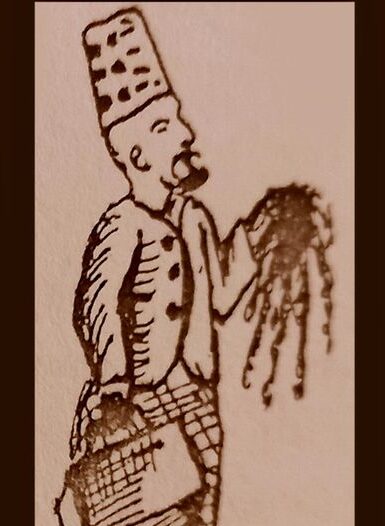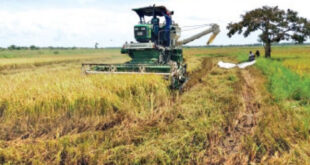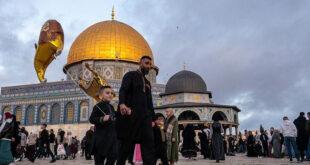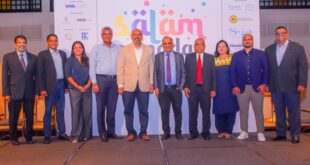 Hulftsdorp is home to what is probably the oldest Moor community in Colombo. It still preserves memories of this past in its two street names still known as Old and New Moor Street and its Grand Mosque, regarded as the most authoritative mosque in the entire island, which must have been built over a still older edifice a long time ago.
Hulftsdorp is home to what is probably the oldest Moor community in Colombo. It still preserves memories of this past in its two street names still known as Old and New Moor Street and its Grand Mosque, regarded as the most authoritative mosque in the entire island, which must have been built over a still older edifice a long time ago.The Moors of Hulftsdorp have since ages past called their traditional quarter encompassing Old Moor Street, New Moor Street, Messenger Street, Barber street, Grandpass, Wolfendhal and environs Theruv, a Tamil word meaning ‘Street’ or ‘Highway’. This may have been due to the fact that they were all large and busy thoroughfares with residences lining both sides of the streets sans pavements.
That they should have called the area peculiar to themselves as such is not surprising, given that they even gave themselves nicknames. In fact calling people by humorous patta-peru or nicknames was also very common in the Theruv. This must have been prompted by the fact that there were scores of people bearing common personal names which are not many in Arabic. For example names like Hameed and Abdul Raheem were fairly common.
Thus one found some interesting nicknames like Peru Bowran (Glutton), Paal Kudichan (Milk Drinker), Ice Boru (Liar), Bowthavali (Stomach ache), Aana Bulungi (Elephant Swallower), Baang Koli (Turkey), Sheema Eli (English Mouse), Bola Kathirikka (Rounded Brinjal), Kumbal Mashi (Maldive Fish) and Pilapalakindi (Ripe Jakfruit). Others were named after the businesses they engaged in, such as Sheenikada (Sugar Boutique), Irumbu Kada (Hardware Store) and Ollas Kada (Watch repair Shop). Poriccha Koli (Roast Chicken) was applied to one Abdul Rahim of New Moor Street and Anjishazathu Mapulle (Five Cents Bridegroom) to the father of one Faleel who worked at Marzuk’s textile shop and who travelled as such in a decorated tramcar with his entourage.
OLD MOOR HOUSES
In the good old days, certainly in the early part of the twentieth century if not before, the Moor houses of the area, and especially Old Moor Street, were very closely built and in many cases interconnected to one another by means of doors, testifying to the fact that they were a very close-knit community. Whenever there was a wedding or a kandoori feast in honour of a saintly personage two or three houses would open their doors to accommodate a larger crowd than would permit in one house.
Many of these houses had lattice work on the outside known as giraadi. This feature let in light and air while assuring privacy, preventing strangers gazing at the womenfolk inside and at the same time allowing the women of the house to peer outside especially if a visitor was at the gate or door. Some houses here took this feature further with trellis work for walls as in Messenger Street which could be said to have had walls that breathed.
THE ATTIRE OF THE THERUV
The area being a conservative Muslim area had its denizens dressing well. Even the well-to-do women of the Theruv of the forties were dressed very modestly and whenever going outdoors wore over their sarees a white sheet known as tuppatti which covered their hair and draped round their bodies up to the ankles, leaving only the face bare. These were usually made from giupure of French origin. The sarees of the more affluent women were of luxury Tootal or Robia Voile cotton in pastel colours.
TRAVEL IN THE THERUV
Travelling in the Theruv back then was by foot or by Bakki-Karatta, a bullock-drawn carriage with two large wheels and two sets of seats on either side, the driver’s seat in front and a gate with two steps in the rear. Many were the occasions when whole families in the Theruv would go on picnics to the outstations, a tradition known as Puraajal. Oftentimes many families who were connected by blood or marriage or even neighbours would get together and go a visiting to far-off scenic spots of religious significance such as Daftar Jailani or Beruwala. Each family would prepare a particular item of food so that there would be a great variety of foods being shared among the travelling group.
REGULAR VISITORS TO THE THERUV
Among the regular visitors to the Theruv area whose visits were much looked forward to by the children of the 1940s and 1950s were the Bombai Muttai Man all clad in white, sarong, banian and turban to top it, who brought besides his local variety of candy floss, a very thin crispy cake coloured pink or green called Pospam.
Another regular visitor was this Moorman dressed in a colourful sarong and shirt who arrived with a long pole or pestle around which was wrapped candy floss with streaks of red, pink and white from which he would pluck it out and dispense to children for a trifling sum. He would at times pull and mould his wares into various shapes such as train engine, bus or house depending on the preferences of his little customers who would make known their choice from the samples he brought along with him. The result was a fairly solid sweet which could be kept for a while and eaten at leisure.
Among other regulars was a Muslim man in sarong and coat known as Khuda-Da who sold large patties known as pastol filled with baabat (tripe); the ice cream man who came carrying a round wooden box on his head in the centre of which was a silver canister surrounded by ice which contained the ice cream which he served in cups and others who sold masaala vada (spicy savoury doughnuts) and avichcha kadala (a sort of round gram) who came pushing these in an open cart and in the evenings or night a solitary man selling inji-dosi (ginger preserve). There was also a Moor woman who used to do the rounds selling seenakku(Chinese cup cake) and a cylindrical cake known as pittu filled with crude jaggery sugar. On certain evenings she would bring a delicious cake of Arabian origin in both its savoury (orappu kunafa) and sweet (inippu kunafa) forms, the latter interspersed with a mixture of raisins, cashewnuts and sugar syrup.
Many were the cries heard in the streets of old Hulftsdorp. These mainly emanated from itinerant merchants peddling their wares. M.M.Thowfeek in his paper Folk-lore of the Ceylon Moors contributed to the Souvenir of the Moors Islamic Cultural Home (1965) provides us an insight into the cries and wares of one such character, the Moor gram seller Mustapha who was very popular in the Theruv. The man it is said used to sing a mixed Sinhala-Tamil ditty which went as follows:
Akkara Wakkara, akkara wakkara, Enda mage malli nangi
Michcham nalla thinnungo, Bohma la bye
Michcham nalla thinnungo, Thara mutta, seeni mutta
Arkina mutta, poriccha mutta, Bola kadalay,
waruththa kadalay, Maleeda mani kadelay
This character must have been identical, if not similar to another such character mentioned by I.B.David in his Street Cries of Colombo published in the Times of Ceylon Christmas Number (1924). David refers to ‘a Moor gram seller with a Charlie Chaplin face, whose humorous sallies made him a favourite with both young and old’. He says: “While yet a long way off he could be heard heralding his approach with some impromptu like the following repeated in a rapid, resonant staccato:-
Kadalai, Kadalai Pori Kadalai, Alum Pillai Amarthum Kadalai
Mamiku Theriammal Marumal, Vangi, Thinnum Kadalai, Kadalai!
David attempts to translate these cries to his readers as follows:
“The verse extols the seductive qualities of his specially prepared gram. Its delights are declared capable of weaning the infant from its tears and even rendering the daughter-in-law insensible to the mother-in-law’s presence”
Besides these street cries, one could hear during the holy month of Ramadan, wake-up calls, urging the faithful to get up for their pre-dawn meal before commencing the dawn to dusk fast Muslims are supposed to engage in that entire month. M. M. Thawfeeq notes in his Muslim Mosaics (1972) that the Muslim household of Ceylon a generation ago awoke for the pre-dawn meal taken before the fast not by the alarm clock, but by a band of men, Indian fakirs, dressed in turban, long black capes, and cloth, with beads hung round their necks and arms, who used to roam the streets with a staff in one hand and a hurricane lantern in the other. He notes that they worked both sides of the streets, knocking at the doors of slumbering Muslims with their staffs and shouting “Otto Bawa Otto”, a mumbo-jumbo for “wake up, it’s time for starting your fast”. These Indian fakirs, says Thawfeeq, were a devoted lot. “They worked their areas to a plan. And it was easy for them to operate as the Muslims of two or three decades ago, especially in Colombo and main cities, lived huddled together in Muslim-predominated streets like New Moor Street, Old Moor Street, Messenger street, etc”.
The faqirs would, as the Ramadan festival day approached, or on the day of the festival itself go round from house to house collecting money for the service rendered during the month long fast days.
But there were much more louder sounds made during this month than just Faqirs going round waking up people. Thawfeek tells us in his Muslim Mosaics: “As much as the midnight men awoke the Muslim to begin his preparations for the fast, so did ancient cannon announce the start of the fast in the morning and the end at sunset. While those in the villages and suburbs relied on the pocket watches, wrist watches and wall clocks, to time the fast, in main cities there was a siren or boom to indicate these times. In Colombo. however, there were two ancient and picturesque cannons in its main mosque, the Colombo Grand Mosque in New Moor Street. Here again the concentration of Muslim homes in the Colombo 12 areas made it easier for the Muslims to time their religious obligations. The boom of the two ancient cannons could be heard as far as Maradana, Borella and Slave Island. One was a muzzle-loaded Dutch cannon which did service for over fifty years. It might have been one of those left behind by the Dutch in the Hulftsdorp area. The other was a British cannon dating from late Victorian times and brought as scrap in 1937. Expert renovation and the equipment of two new wheels made it serviceable. During World War II these cannons were silenced due to security reasons. But the military authorities, during the Ramazan fast month, fired ack-ack guns both to guide the local Muslims as well as the Punjabi soldiers who observed the fast strictly while they served here”.
Until about fifty years ago or so, there was a canon called Beerangi at Colombo Grand Mosque that would be fired at the time of breaking the fast. When the end of the fasting month was nigh and the new moon was sighted, the canon would boom once again to announce the festival the following day. The Muezzin (caller to prayer) of the mosque, along with other mosque workers, would stuff into the barrel old newspapers that had been pressed into boluses. The barrel would be moved upwards and the newspaper boluses put in and pressed hard with a metal implement. Gunpowder would then be poured into a little hole in the rear part of the barrel and the canon would be fired facing westward. It gave a loud boom that could be heard upto Zahira College in Maradana. This final boom would announce the Great Festival of Eid-Ul-Fitr which concluded the fasting season.
MAIN LANDMARKS OF LIFE
The main landmarks of life were celebrated with much pomp. The naming ceremony of the child known as Per Podiya Sappadu usually took place on the fortieth day of birth and was celebrated with lunch mainly among the women. It was also on this occasion that the baby girl was circumcised, a very private affair taken care of by the womenfolk, the circumcision of the boy usually taking place much later with much pomp and celebration. Another ceremony concerned with the daughters of the house was the ceremony of attaining age known as Samattiyam Sappadu where the feast would last from 1-7 days depending on the wealth of the family. On this occasion the womenfolk would play indoor games like pallankuli played with cowries.
The circumcision of the boy unlike that of a girl was celebrated in grand style. Often the male siblings of the family ranging from ages 7 to 13 would be circumcised on the same day. Among wealthier families the circumcision ceremony known as Sunnattu Sappadu would last seven days. A large one-sided drum known as rabana would be played to drown the cries of the boys being circumcised and thereafter a variety of musical entertainment would be provided on percussion instruments such as a one-sided drum made out of a pot known as paana bajaa. The musical sessions would go well past midnight while visitors would be served Shukku Kopi, a refreshing coffee prepared with cardamom and dried ginger. The proudly circumcised boys would on this occasion be seated on makeshift thrones and the repast would continue for as many as seven days.
Weddings were a still grander affair. In the run-up to the weddings in the area, the houses were whitewashed and a tinsel throne prepared in the bridal chamber. About ten days before the day fixed for the wedding, the invitations would issue . In the late 1800s such invitations were not by means of invitation cards , but by the bridegroom himself, attired in his best and accompanied by a large party of friends, attending to it by calling at every house wthin the radius it is said of several miles, regadless of how high or low they were, to personally invite its inmates of both sexes. In later times, beginning from about 1900, invitations were delivered by trusted people and one noteworthy name that has come down to us was that of Aboo Hajiar whose real name was Aboobacker Hadjiar whose first assignment is said to have been the wedding of Kodakada (Umbrella Shop) C.L.M.Sheriff of Messenger Street in 1913. He would print the cards and travel by rickshaw to deliver them.
When the time had come for the bridegroom to depart to the bridal house to wed his sweetheart who would be seated on a colourful bridal throne made of tinsel, the priest would pronounce a Fatiha or Islamic Lord’s Prayer, to which all present would respond with an Ameen (Amen). The start would be made with a flourish of tom-toms, cymbals and flutes, all this under a brilliant display of fireworks, blue lights and pendant lamps. The groom would be seated in an open carriage if the bride’s house be distant, or else would proceed on foot attended by two boys all dressed up for the occasion, and accompanied by a large retinue of relatives, friends and even common people from all walks of life.
Other forms of entertainment especially on the ten days of Ashura in the Islamic month of Muharram were the procession of men dressed up as horses known as Poi Kal Guduras and a boy all dressed up as a Karadi or bear which little children found especially frightening. Once a fortnight or so in the evenings a stilt-walker known as Bamboo-Kaal dressed up as a woman and carrying an umbrella also used to visit the area. All this took place in the 1940s and 1950s before passing into oblivion.
Extracted from the book ‘Great Days of Colombo by Asiff Hussein.
Picture from the article ‘Street Cries of Colombo’ by I.B.David published in the Times of Ceylon Christmas Number (1924)
Post Disclaimer | Support Us
Support Us
The sailanmuslim.com web site entirely supported by individual donors and well wishers. If you regularly visit this site and wish to show your appreciation, or if you wish to see further development of sailanmuslim.com, please donate us
 Donate
Donate
IMPORTANT : All content hosted on sailanmuslim.com is solely for non-commercial purposes and with the permission of original copyright holders. Any other use of the hosted content, such as for financial gain, requires express approval from the copyright owners.
 Hulftsdorp is home to what is probably the oldest Moor community in Colombo. It still preserves memories of this past in its two street names still known as Old and New Moor Street and its Grand Mosque, regarded as the most authoritative mosque in the entire island, which must have been built over a still older edifice a long time ago.
Hulftsdorp is home to what is probably the oldest Moor community in Colombo. It still preserves memories of this past in its two street names still known as Old and New Moor Street and its Grand Mosque, regarded as the most authoritative mosque in the entire island, which must have been built over a still older edifice a long time ago. Sri lanka Muslims Web Portal Sri Lanka Muslims News Center
Sri lanka Muslims Web Portal Sri Lanka Muslims News Center
 Donate
Donate


